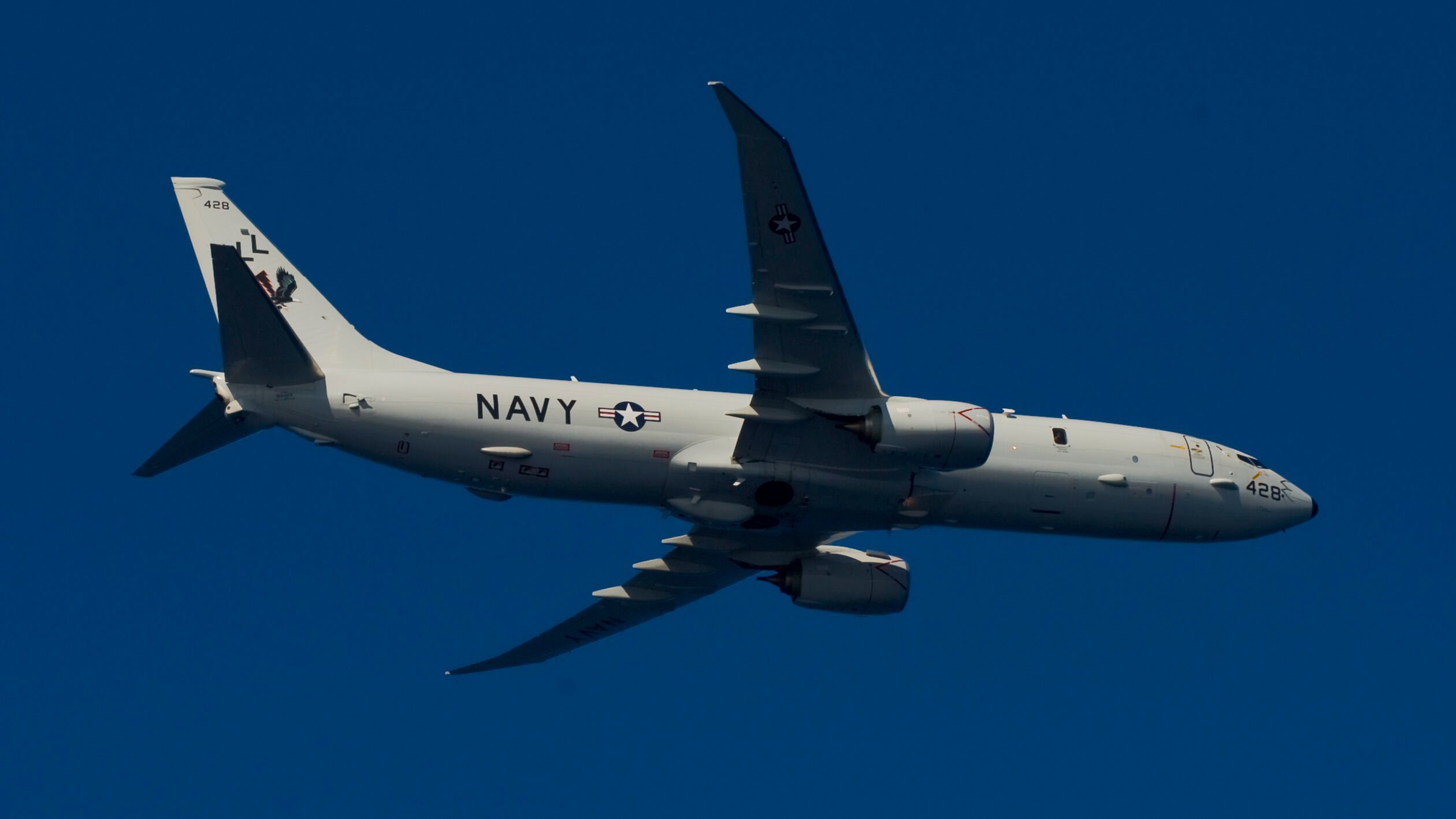
A P-8A Poseidon, assigned to Patrol Squadron (VP) 30, flies over the aircraft carrier USS Harry S. Truman (CVN 75). (U.S. Navy photo by Mass Communication Specialist 2nd Class Mike DiMestico/Released)
SINGAPORE AIR SHOW: They won’t say who they’re in talks with in Asia, but Boeing is clearly eager to sell the P-8 here and is touting a multi-mission pod that the company says increases the aperture of the plane’s sensors.
When Boeing executives were repeatedly asked about prospective sales to Asia, they — as is often the case with international weapons sales — answered with a polite variation of “we’re not going to share our order book with you.”
The best version: “We haven’t missed a Singapore Air Show because of the interest in our region, but we just can’t comment specifically,” Sean Liedman, Boeing’s lead on P-8 international sales, told Breaking Defense.
A P-8 was on the ground in the static display area of the show, complete with a regular crew trained and ready to discuss with visitors the plane and its capabilities — within the limits of classification.
Back to the pod. It’s a 20 ft.-long module, designed to accept modular payloads. Those sensors can include what Liedman called “a variety of multi-sensor, multi-spectral, multi-intelligent capability.” This takes the P-8, which he notes “was born as a multi-mission maritime aircraft,” and “further expands it to be truly multi-int and multi-spectral.”
The standard sensors on the P-8 offer much smaller apertures than the pod can make available, simply because of its size. As space experts know particularly well, physics drive capability, particularly where optics and radar are concerned.
Now a larger pod will generate much more data, which could be a challenge in itself. But Liedman noted that the P-8’s crew of specialists alleviated any overload of data pipes. “They do first-pass analysis and take snippets of interest to reduce the amount of data that needs to be extracted from the airplane,” he said. By contrast, an unmanned aircraft has to dump all its data to a ground station.
Boeing has reason to be eager for more P-8 sales. The most recent contract signed with Germany for five aircraft keeps the production lines open “until the end of 2024.”






















